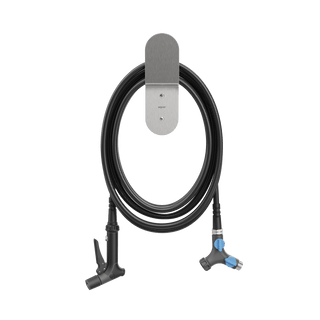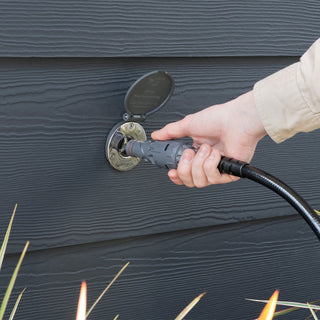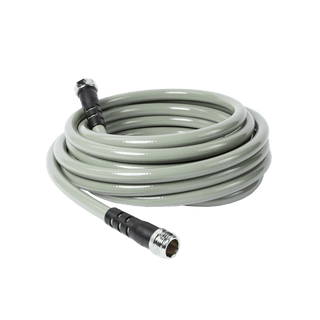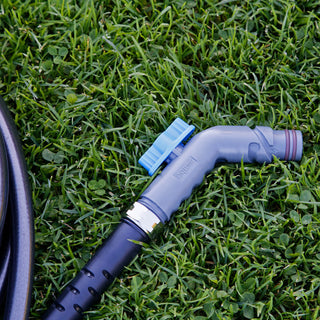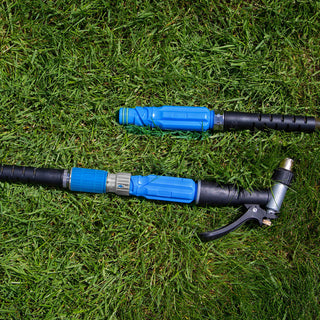10 Easy-to-Grow Fruits & Vegetables for Gardening Beginners
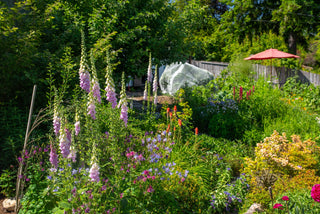
Growing your own fresh food can be extremely rewarding, not to mention tasty! Plant these easy-to-grow fruits and veggies in your garden and watch them flourish.
Strawberries
Sweet and juicy, perfectly ripened strawberries are hard to beat. Strawberries will be content in nearly any soil condition, as long as the soil isn’t soggy or too heavy. Plant them in early spring in a sunny location, when the ground is still moist and cool. Strawberries desire at least eight hours of daily sun and must be planted so that the crown is just above the soil’s surface. Water strawberry plants in the mornings and avoid getting their delicate leaves wet—one inch of water weekly should be sufficient unless it’s a particularly hot, dry summer. Ripe strawberries will be lusciously fragrant and a vibrant red color. Enjoy them as is, folded into creamy yogurt, spooned on top of pancakes or shortcakes with freshly whipped cream, and muddled in refreshing, fruity cocktails.
Raspberries
Pluck plump raspberries from the vine and plop them straight into your mouth! Raspberry bushes are happiest growing in cooler climates, although there are now varieties suited to different planting zones. Plant one-year-old raspberry canes in early spring once the ground warms up and thaws out. Raspberries prefer sunny spots, but partial sun will do. Rich, well-drained soil is important, along with proper air circulation and shelter from wind. Prune out dead canes yearly in order to promote more growth. Raspberries are ready to pick when they’re deep red in color and show little resistance when harvested. Blend raspberries into vitamin-packed smoothies, toss a handful into a bowl of cereal (or ice cream), and upgrade your glass of freshly-squeezed lemonade.
Tomatoes
Fragrant homegrown tomatoes are much more flavorful than the store-bought variety. Pick up small tomato plants from your local nursery well into spring, then locate them in a sunny spot. Tomatoes love sunshine and need at least six hours a day of direct exposure. Loose, well-draining soil is recommended, as well as two inches of water per week. Tomatoes are ready to pick when bright red and sweet-scented. Delicious as is, tomatoes are also lovely tossed into green salads and light pasta dishes, sliced onto sandwiches, simmered down into vibrant sauces, and roasted in the oven.
Green Beans
Did you know that young, tender green beans don’t require cooking? When spring is well underway, plant the seeds one to two inches deep in moderately rich soil, watering regularly until they sprout. Green beans flourish in full sun with one to one and a half inches of water per week. Avoid wetting the leaves, as they are prone to disease when damp. The vegetable will be ready to harvest anytime after the beans form—young green beans will be more tender and less fibrous than older, thicker beans. Toss green beans in a veggie stir fry, satué and serve with zesty lemon wedges, roast in the oven with salmon or white fish, and serve crudité style alongside your favorite dip.
Summer Squash
Zucchini and yellow squash are known for their abundant presence in home gardens. Start off with just one plant, as summer squash is quite the producer. Summer squash requires warm soil, so plant your seeds early to midsummer, two-inches into the ground. The soil should be moist and well-drained. Avoid soil sogginess and shade, for these squash love full sun. Frequent and consistent watering is necessary for fruit development, so water deeply, applying one inch of water once a week. Harvest summer squash when they are immature and still tender; bigger is not better in this case. Shoot for six to eight inches in length. Bake summer squash into delectable muffins or bread, slice and grill on skewers, lightly fry savory Mediterranean pancakes, or embrace your inner chef and whip up ratatouille.
Cucumbers
Pickles anyone? Cucumbers grow quickly in warm, sunny climates when watered consistently. Cucumber plants should be seeded or transplanted at least two weeks after the last frost. Plant seeds one inch deep in fertile, well-drained soil. The soil should be light and moist, not soggy or compact. Water one inch in the morning or early afternoon weekly, avoiding splashing the leaves which are susceptible to disease when damp. Harvest once the vegetables have grown to six inches in length. Large cucumbers will be unpleasantly bitter in taste. Enjoy cucumbers tossed into Greek salads, layered throughout loaded veggie wraps, served with crispy falafel, and dunked into garlicky hummus. Did we mention pickles?
Lettuce
Forget bags of old, slimy grocery greens. Lettuce prospers in cooler climates and grows well during the spring and fall in most regions. Sow once the soil is above 40 degrees. Select a sunny area, then plant your seeds a quarter to a half inch into fertile, moist soil. Lettuce grows quite quickly, so stagger your plantings to continue harvesting. If the leaves are wilting, sprinkle them lightly with water to cool them off and slow transpiration. Keep the soil moist and well-drained. Lettuce is ready to harvest before maturity, when it is still young and tender. The leaves will have just reached full size. Salads aside, assemble asian-inspired lettuce wraps, layer fresh greens onto flavorful burgers and veggie-forward sandwiches, and juice those babies up!
Carrots
Pull sweet, crunchy carrots straight from the earth for quick, healthy snacking. Carrots are easy to grow as long as they’re planted during cooler periods of the growing season in loose, sandy soil. Choose a sunny location, then remove rocks and soil clumps that could potentially impede the carrots’ growth. Carrots enjoy sunlight, although they’ll grow in partial shade. Sow carrot seeds a quarter inch into the soil, keeping the soil moist with frequent, shallow waterings. An inch of weekly watering should be sufficient at first, then increase the amount to two inches as the roots mature. Smaller carrots will taste best, so harvest the vegetable once they reach the size of your finger. Grate raw carrots into salads, roast in the oven until tender and caramelized, or blend into creamy, flavorful soups.
Mint
Fragrant mint adds a punch of herbaceous, fresh flavor to dishes. This perennial is a fast grower, so start off by planting just one or two purchased plants during late spring in moist, light soil with good drainage. Mint will be just fine with a little shade, so no need to worry if full sun exposure isn’t an option. Keep the soil moist, and prune back the plant when necessary. Young leaves tend to be more flavorful and are ideal for consumption. Pluck away! Fold mint leaves in fruit salads, toss into light pasta dishes, mix with tangy yogurt and lemon for a cooling condiment, or stir up a classic julep.
Chives
Chives are just as tasty as they are beautiful. The perennial member of the onion family is best planted in cool, early spring for a late spring to early summer harvest. Plant chive seeds a quarter inch into moist, fertile soil once the soil is workable—60 to 70 degrees is ideal. Chives thrive in direct sun, although the plants can tolerate light shade. Consistent watering throughout the growing season will help produce high yields. When harvesting for the first time, cut the leaves down to the base 30 days after transplanting, or 60 days after seeding. Garnish spring and summer soups, sprinkle on top of potato dishes and deviled eggs for an extra pop of color and flavor, or mix with cream cheese for a delectable spread. The purple flowers are edible as well!
 Your plants need water just as much as you do.
Your plants need water just as much as you do.
Hungry yet? Keep your prosperous garden hydrated with ease. Aquor’s got your back.
Gardening Vocabulary
Crown: the point where the plant stem meets the roots
Planting zones: the standard gardeners can use to determine which plants are likely to thrive in a given location
Cane: a plant stem
Sow: to plant seeds
Transpiration: the process of water movement through a plant and its evaporation from stems, leaves, and flowers






